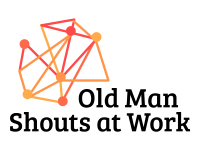Whether it be one-stop-shop call centers or unified intake through a shiny website, without dealing with the core issues of throughput and quality, all your customer experience efforts make no difference.
Those of you who have spent a little time reading John Seddon will know that he likes to rail against call-centers. He explains how they did not achieve what they were designed to do, and that most of the increase in usage by customers is “failure demand”, customers having to call again because they were not satisfactorily served the first time. What Seddon is weak on is why the service centers do not accomplish their goal. In this article, I will give my explanation using the Theory of Constraints.
An hour lost at a bottleneck is an hour out of the entire system. I say an hour saved at a non-bottleneck is worthless. Bottlenecks govern both throughput and inventory
Eliyahu M. Goldratt
Setting the Scene
Let’s imagine a scenario where we have three separate licensing processes. They all follow the same major steps, but the details differ. The diagram below shows the three workflows along with how many license-requests each step can handle per unit time.

How many licenses can each process produce? Intuitively, we know that itis the same as the slowest part of the chain. The next diagram shows the slowest step or the bottleneck, in red and the speed of each process.

Adding a Unified Intake
In the name of process improvement, let’s add a nice unified intake process in front of these licensing processes. It could be a call center, or a website with chatbots and pretty forms to fill out. It can be the best planned, designed and executed project ever. The diagram below shows how it might work and the capacity of this step. What effect will this new intake process have on the number of licenses created?

The Impact
We added a new intake step that can handle 40 license requests per unit time. The capacity is higher than the combined capacities of each subsequent step. It must speed up the system, right?
Well no! The speed of each process is set by the slowest step. We have done nothing to improve the slowest part, so we have not improved the whole system.
What did the new intake improve? We can see that it did not improve throughput or the quality of the completed product. It made it simpler and more pleasant to request the license. You could argue that we have improved the customer experience and in a simple sense that is true. However, the request is the first part and feeling good about that is fleeting. If confronted with having to wait a long time, or a poor quality product at the end, then customers are going to dismiss the intake improvements.
Fundamentals First
When you plan to improve a process or system of work, you need to be clear headed about what you are trying to accomplish. You also need to take into account that the customer will include other aspects that you are not considering. You will find that without taking throughput and quality into account, your improvements may not be recieved as well as you would like.


You must be logged in to post a comment.